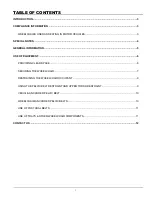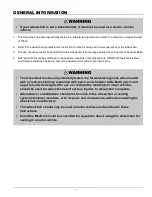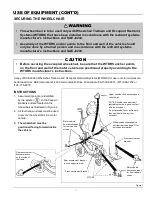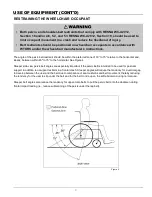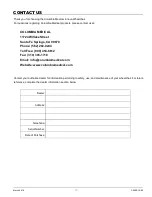
12
USE OF EQUIPMENT (CONT'D)
The wheelchair-anchored pelvic belt restraint is available for purchase separately from:
Sure-Lok, 2501 Baglyos Circle, Bethlehem, PA, 18020
Tel: 866-SURE-LOK (866-787-3565), Fax: 866-TIE-DOWN (866-843-3696).
www.sure-lok.com
Their part number is FE201186
USE OF POSTURAL BELTS
• The use of postural pelvic belts attached to the wheelchair is encouraged during
travel. However, these belts should be positioned so that they don’t interfere with
the proper positioning of crashworthy belt restraints and should not be relied on for
occupant protection in crash situations unless the postural belt has been designed
to comply with, and perform to the requirements of 4.6, 5.2, 5.3, and 6.1 of section 18
of RESNA WC-4.
USE OF TRAYS & OTHER WHEELCHAIR COMPONENTS
Heeding these warnings will reduce the likelihood of serious and fatal injuries to
occupants seated in wheelchairs who are involved in crashes, emergency vehicle
maneuvers and will increase safety during normal travel.
•
Rigid trays on wheelchairs that are not specifi cally designed for use during travel in
motor vehicles should be:
a. Removed and secured separately in the vehicle, or
b. Secured to the wheelchair so it will not break free in a crash, and
• Be positioned with a gap of at least 75 mm (3 inches) between the edge of
the tray and the wheelchair occupant’s abdomen and/or chest so as not to
interfere with proper belt restraint use, and
• Have energy absorbing padding placed in the gap between the tray edge and
the wheelchair occupant.
• Whenever possible, auxiliary wheelchair equipment should be removed from the
wheelchair and stored in a cargo area or secured in the vehicle during transit, or
effectively secured to the wheelchair so that it does not break loose and cause injury
to vehicle occupants in a crash.


